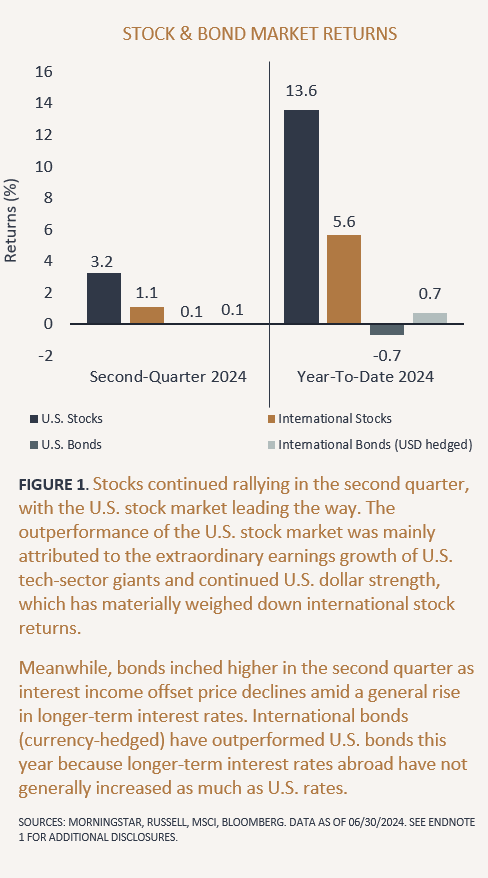How Interest Rates Impact the Stock Market
Interest rates play a crucial role in shaping the stock market, influencing everything from investor sentiment to corporate earnings. When interest rates change, the ripple effects are felt across various sectors, impacting the overall economy and financial markets. Understanding how these changes affect stocks can help investors make informed decisions and adjust their portfolios accordingly.
The Relationship Between Interest Rates and the Stock Market
Interest rates, set by the Federal Reserve (the Fed), serve as a benchmark for borrowing costs throughout the economy. When the Fed raises or lowers rates, it impacts businesses, consumers, and investors alike. Higher interest rates typically make borrowing more expensive, while lower rates encourage spending and investment.
Effects of Rising Interest Rates on Stocks
When the Fed increases interest rates, borrowing costs for businesses rise. This leads to several significant effects:
- Higher Costs for Businesses: Companies relying on debt to finance expansion, acquisitions, or operations face higher interest expenses, which can reduce profit margins.
- Lower Consumer Spending: As borrowing becomes more expensive, consumers may cut back on discretionary spending, impacting companies that rely on consumer demand.
- Stock Valuations Decline: Higher interest rates increase the discount rate used in valuing future cash flows, leading to lower stock prices.
- Sectoral Impact: Interest rate hikes tend to affect growth stocks, particularly in technology and consumer discretionary sectors, more than value stocks.
Effects of Lower Interest Rates on Stocks
Conversely, when the Fed lowers interest rates, borrowing becomes cheaper, leading to positive effects on the stock market:
- Lower Costs for Businesses: Companies can borrow at lower rates, reducing their interest expenses and boosting profits.
- Increased Consumer Spending: Lower interest rates make loans, mortgages, and credit cards more affordable, leading to higher consumer spending and economic growth.
- Higher Stock Valuations: Since lower interest rates reduce the discount rate applied to future cash flows, stock valuations tend to rise.
- Sectoral Benefits: Growth stocks, particularly in technology and real estate, often see significant gains when interest rates decline.
How Interest Rates Impact Different Sectors
- Technology and Growth Stocks: Growth stocks, which depend on future earnings, tend to decline when interest rates rise due to increased discount rates.
- Financial Sector: Banks and financial institutions benefit from higher interest rates as they earn more from lending activities.
- Real Estate: Real estate stocks and REITs tend to struggle when rates rise, as higher mortgage rates can slow property demand.
- Consumer Discretionary: Companies in this sector are sensitive to interest rate changes as consumer borrowing and spending patterns shift.
- Utilities and Bonds: Defensive sectors, such as utilities, often underperform in rising rate environments as their fixed-income alternatives become more attractive.
The Role of the Federal Reserve
The Federal Reserve’s monetary policy decisions directly influence stock market movements. The Fed adjusts interest rates based on economic indicators such as inflation, employment, and GDP growth. When inflation is high, the Fed raises rates to cool the economy. Conversely, during economic downturns, it lowers rates to stimulate growth.

Investor Strategies for Changing Interest Rates
- Diversification: Investors should maintain a diversified portfolio to mitigate risks associated with changing interest rates.
- Focus on Value Stocks: Value stocks tend to perform better in rising rate environments compared to growth stocks.
- Monitor the Yield Curve: A flattening or inverted yield curve can signal economic slowdowns, affecting stock market performance.
- Consider Bonds: When interest rates rise, bond yields become more attractive, providing a hedge against stock market volatility.
- Sector Rotation: Shifting investments into financial stocks, consumer staples, and energy stocks can help navigate rising rate environments.
Conclusion
Interest rates significantly impact stock market performance, influencing corporate profitability, investor sentiment, and economic conditions. While rising interest rates can pose challenges for equities, they also create opportunities for investors who strategically adjust their portfolios. Understanding these dynamics allows investors to make informed decisions and capitalize on market movements driven by changes in interest rates.






Leave a Reply